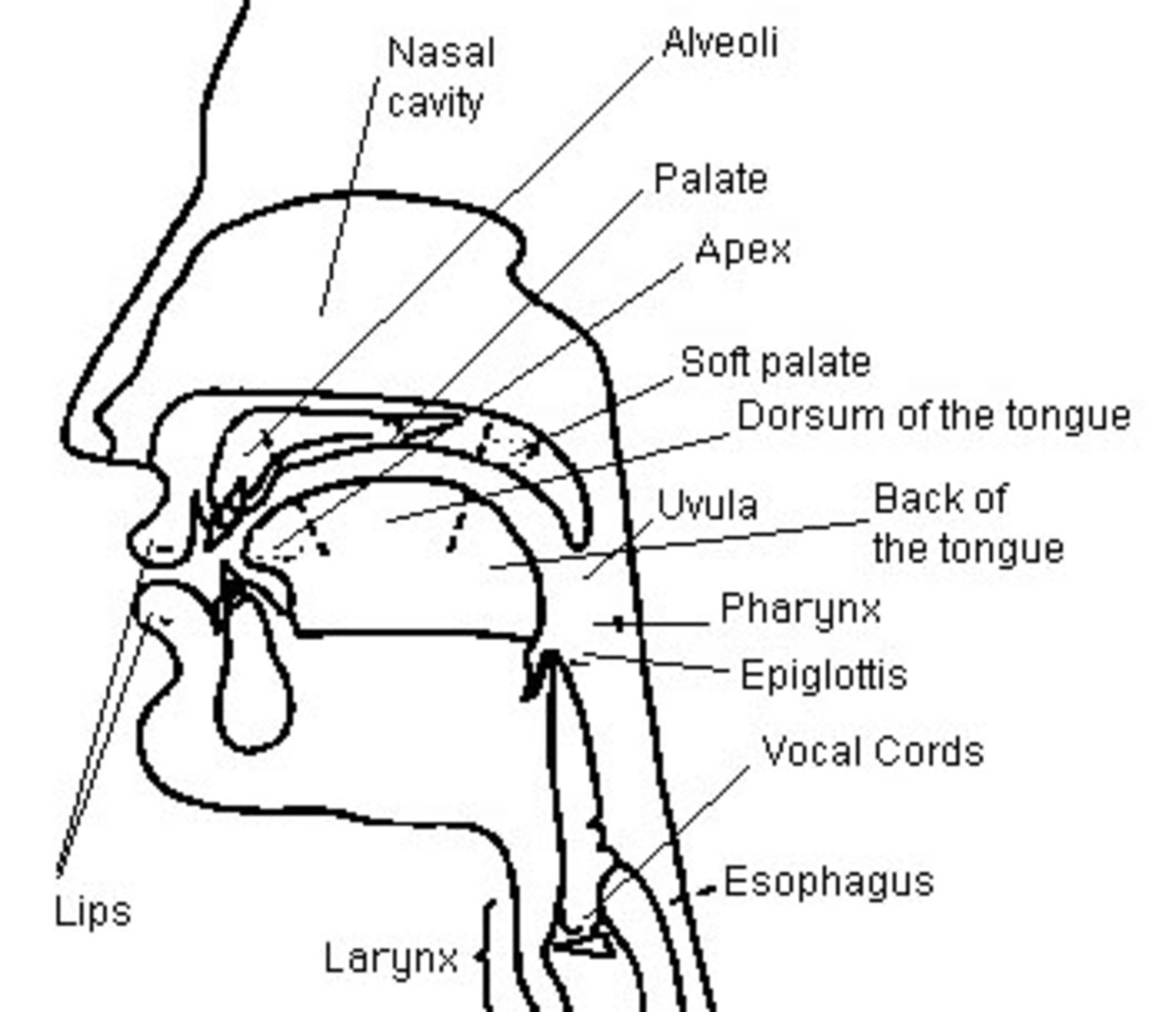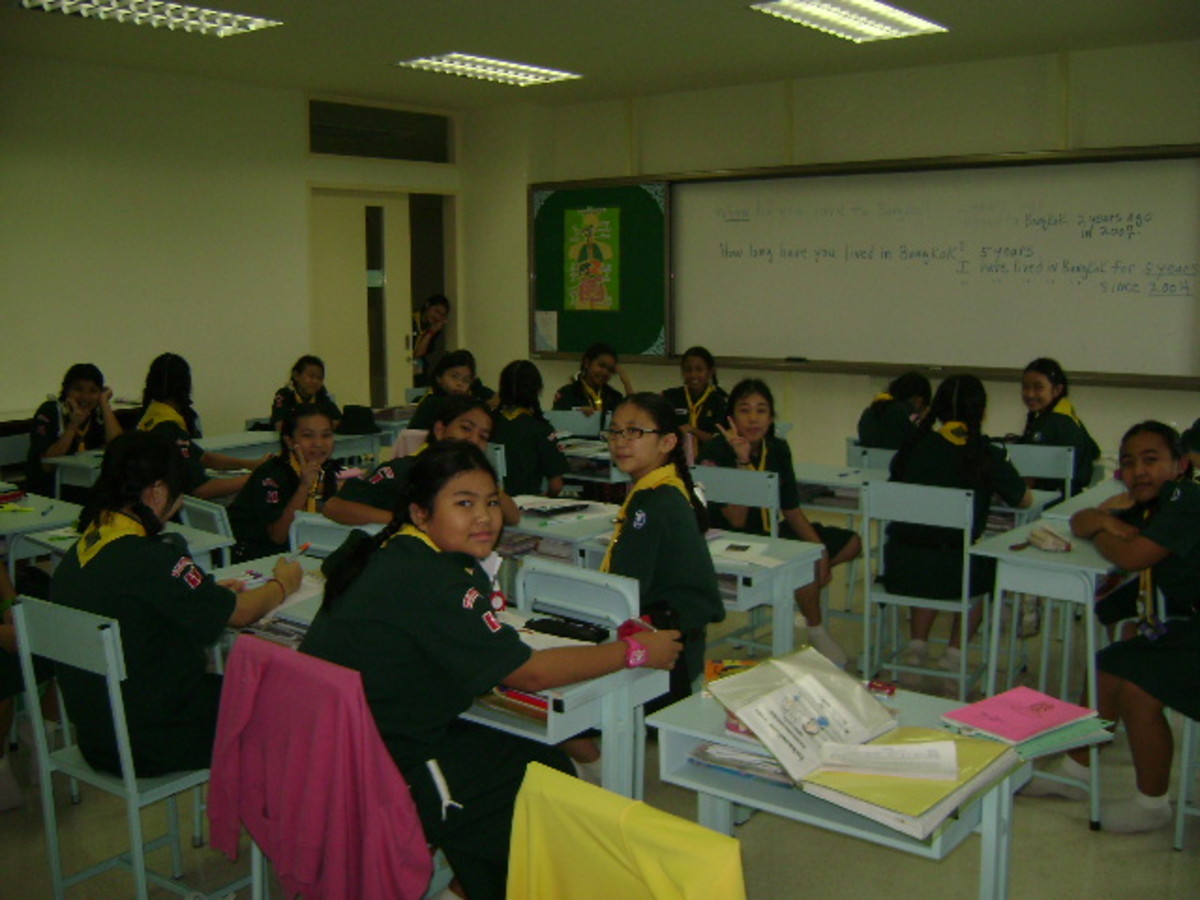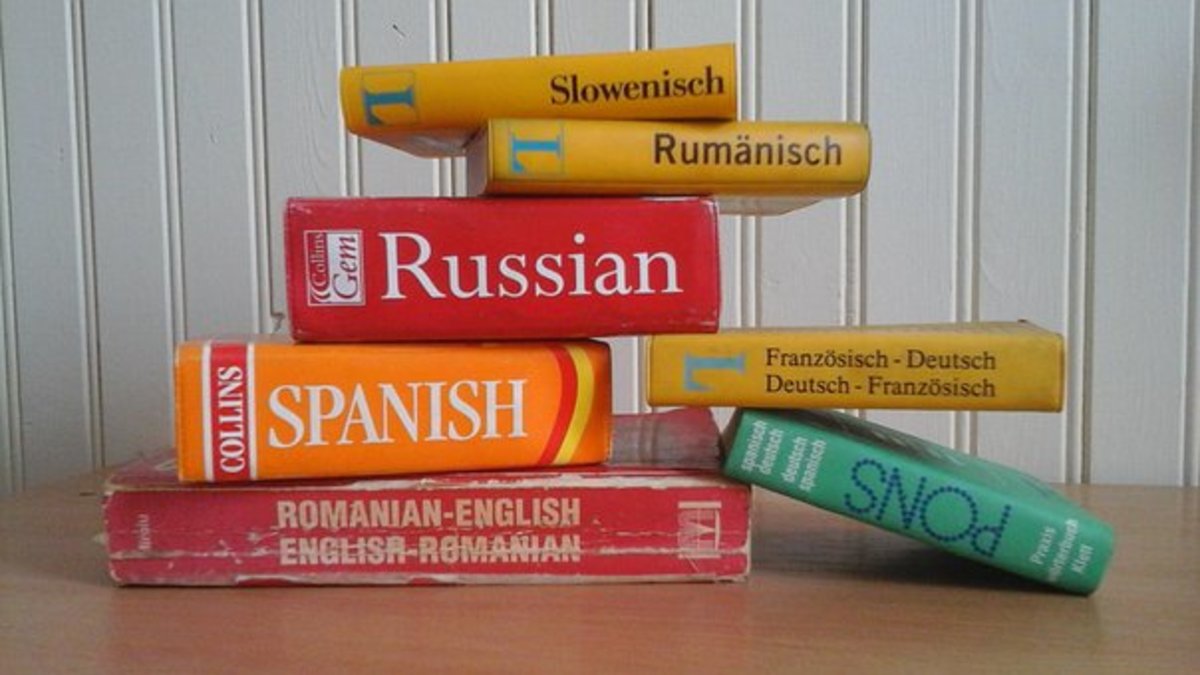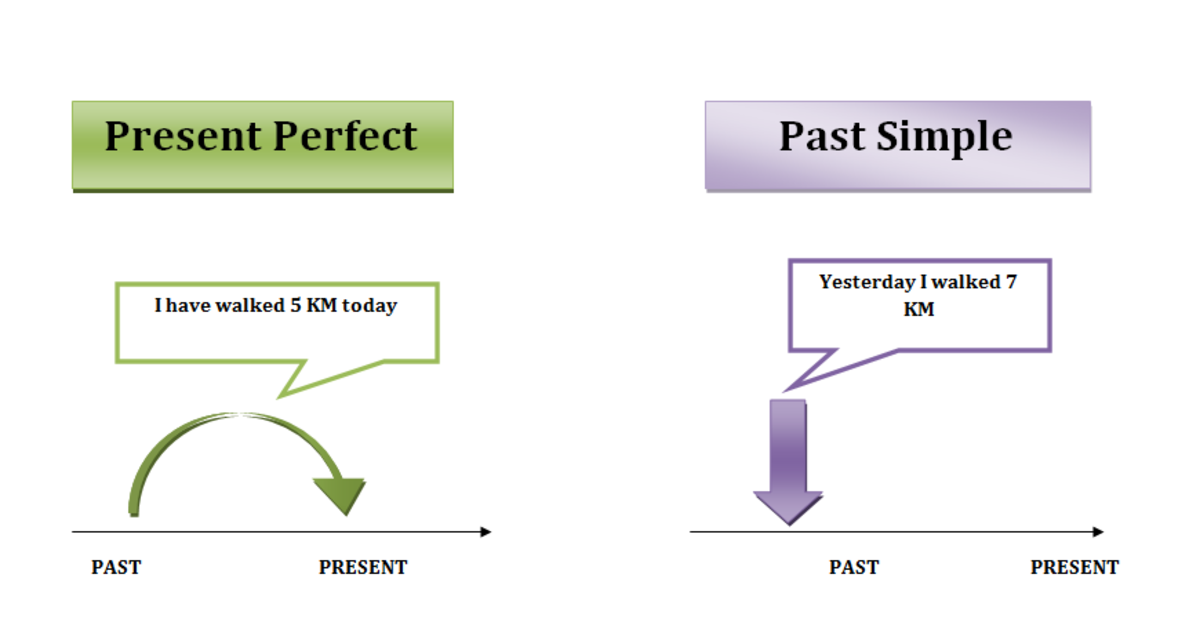Teaching English as a Second Language: Teaching Writing Skills to ESL Students
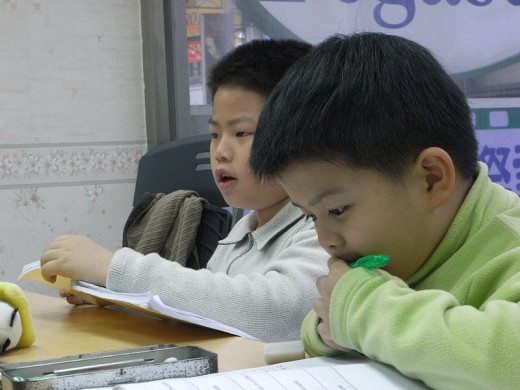
First Language Interference.
The English Language is the second language in many countries in the world. In Malaysia the Malay Language is the first language and it is the national language. The English language is the second language and is taught in schools too. It is also a language that is widely used by the people of this country but teaching the language as a second language has its own difficulties. In Malaysia, the people are of multi racial origin. We have Malays, Chinese, Indians, Sikh and various other smaller indegenous groups of people. Each of these groups have their own mother tongue which they use within their own communities. Hence, the greatest problem faced by teachers of English as a Second Language is first language interference.
Students have a tendency to think in their mother tongue and try desparetly to translate their thoughts and ideas into the English language. The result is often a mess and ESL teachers have an uphill task trying to get their charges to master the language. While the teaching of English as a Second Language is often divided int the teaching of Listening, Speaking, Reading, Writing and Grammer Skills, it is the writing skill that students fail miserably in.
The Dreaded Writing Task
A writing task is often greeted with moans and groans by students in many a classroom. Many students, who feel they are not able to accomplish the tasks required, often perceive writing, as a dull and difficult task. Teachers, strive to comply with the requirements of the syllabus in one hand, and the examinations that loom at the end of every school year often use very rigid methods to teach these skills. Many teachers shun from allowing students to use their mother tongue during the English Language lesson as it is deemed improper and hence, wrong. The belief that the English Language should be taught in English seems to be the prevailing notion of these teachers and this is an excellent approach if our students are proficient in the language or at least have an above average acquisition of the language.
The reality is that the majority of the students lack the level of proficiency that allows them to write effortlessly and fluently. I believe that we, as educators should begin to think ‘out of the box’ and look for other methods that work in producing effective writers who acquire lifelong writing skills. In order to do this, educators should learn to focus on the students’ needs and unravel the innate skills that students bring with them into the classroom, to help them learn the English Language. We should utilize the technology available in assisting students to gain confidence in their writing.

Let's Do The Narrative
There are many reasons why students do not do well in the essay-writing component. The two main aspects are content and language. In most examinations students are given four or five topics to choose from. The topics range from a descriptive essay, narrative essay, argumentative essay, reflective essay and a single word topic. The students often do not have a clue on what to write and often pick a topic based on their whims and fancies. The result needless to say is often disastrous.
Teachers need to guide students to choose proper topics so as they would be able to write meaningful essays. Students who are not fluent, lack the vocabulary needed to write good descriptive essays. The argumentative and the single word essays too, do not produce the desired results as many students lack the knowledge and hence, the content to carry these essays through. How the reflective essays turn out often depends on the topic and how students are able to relate to it. A topic like ‘The Saddest Day In My Life” will bring better results when compared to a topic like ‘If I Had A Million Ringgit”, which would often be monotonous. This brings me to the one remaining essay form, the narrative essay.
Based on experience, I have come to realise that the narrative essay is most suitable for students especially those who lack the language proficiency and are not really well read. My premise is that every student can tell a story. In this form of essay, content is no longer an issue. Even the weakest of students will be able to tell a story. Observation of students behaviour will show that students are constantly talking and exchanging stories with their friends. The answer is right there before our eyes. It is simply that we are often blinded by the obvious. Once we acknowledge that content is no longer an issue, then the next question to ask ourselves would be, “Why are the students not writing?” or “Why are they handing in essays with only a few miserable lines?” “What happened to the wonderful stories that, we know, they are capable of narrating?”
The answer is simply this. Their stories are lost in translation. Mother tongue interference is something teachers have to contend with and many teachers try to overcome this issue by getting students to learn to think and write in English. I believe the time has come for us to acknowledge the presence of mother tongue and to learn to use it to our benefit to help students write better English. When students are faced with a writing task, many stare blankly at the paper not knowing what to write. A quick check with students, indicate that only a handful of students really think in the English Language. These are students who often come from homes where English is spoken fluently and are able to write well. The rest think in Malay, Chinese or Tamil and then try to translate their thoughts into English. This process often proves problematical with students taking too much time and losing track of their story line.
Playing And Sharing Stories

Let's Think Out Of The Box
I have found that students write better if the teacher uses the language that students bring with them into the classroom to his/her advantage. This coupled with teaching students the basic rudiments of narrative writing before they begin has proven to be very effective. This is done in a method that I call The Story Board Method of Writing or writing in blocks.
The Story Board Method - How It Is Done
The Story Board Method of Writing involves teaching students how a story develops, reaches its climax and the falling action that follows. It is just like making a movie. Students are also taught how to prepare a storyboard of six blocks to form the outline of their narrative essay. Once students are familiar with this they are taught how to determine and fill in the blocks with the beginning, the climax and the end of their story. When this is accomplished, the students are able to fill the remaining three blocks quickly. What makes this process quick and effective is simply that students are encouraged to complete their storyboard in whatever language they are most comfortable with, very often the mother tongue!
The rational for this is that by allowing students to draw and fill a storyboard in their mother tongue, the issue of content is solved. The story is laid out in and interesting and organized form. It is done quickly and effectively. The student too, is more confident and there is a readiness to proceed to the next stage, the writing of the essay. Although writing out the whole narrative essay may proof a challenge, students are often in a better mindset and will be able to write out the complete essay block by block until the very end. The sense of accomplishment that the student feels at this stage is truly amazing.
For students who have access to computers either at their school or at home, the writing task can be taken one step further. Students are now required to type their essays into a Word document. Once this is done, students are required to use the inbuilt Spell Check Tool to check the spelling of their work. This is done to ensure that students stop and correct their mistakes immediately. This is effective, as many students do not bother to reread the essays corrected by their teachers and learn from their mistakes. This form of self-assessment also allows students a certain amount of independence to learn and correct their errors.
The next stage would involve the use of the thesaurus in the computer. Students, now have to choose three or five (depending on their levels) simple words, underline them and use the Thesaurus Tool to replace these simple words with bigger words. This process would help them learn a few new words in the process of writing and thus help improve their vocabulary. Once this is done, students print out their ‘masterpieces’ and paste them into their books for the teacher. The neatly printed essays, apart from making students feel good, definitely makes marking and grading the scripts easier on the eyes!
Let's Use The Computer to Check Spelling
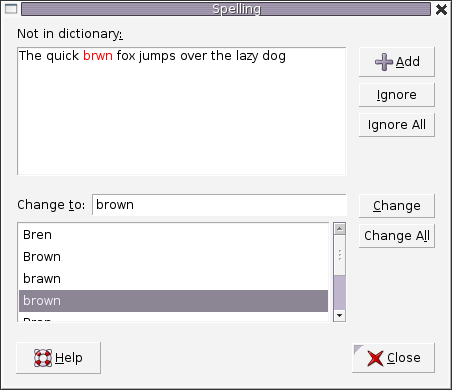
Guidelines for Story Board Method of Writing
Suitable for average and weak students.
- Teach students the fundamentals of story writing ¾ how a story begins, the rising action and the falling action. Use a common fairytale like Cinderella to get the students to understand this.
- Get students to draw six squares in their books.
- Discuss the different scenarios/ ways they could complete the story.
- Teach students to fill the third square first. This is the climax of their story. Reassure students that they can use their mother tongue at this stage of the writing task.
- Now students fill the first two boxes with key words leading to the climax.
- Students decide how they are going to end their story and fill the last three boxes with key words.
- Students now write their narratives in English.
- Note* This stage is only carried out if students have access to computers either at home or in school. Students type their work into Word documents.
- Students use the Spell Check Tool to self correct their work.
- Students identify 3 or 4 words in their story. They are required to underline these words and use the Thesaurus Tool in the computer to replace these simple words with better words. This is to help them learn a few new words with each writing task.
- Students print out their work and paste it into their essay books to be graded.
*Note: The writing task can take up at least 2 hours of lesson time in the beginning stages but it is well worth the effort!
It Can Be Done!


